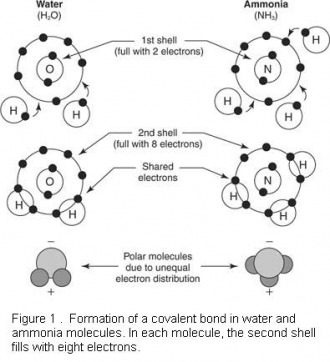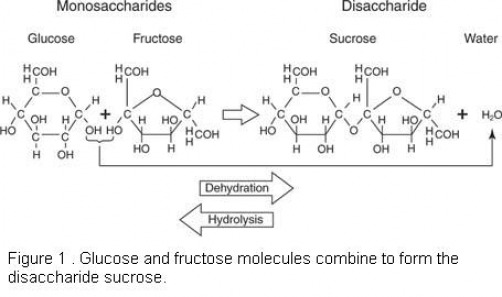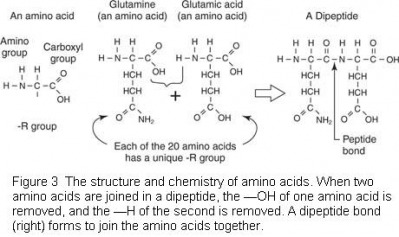Elements and Atoms
For many centuries, biology was the study of the natural world. Biologists searched for unidentified plants and animals, classified them, and studied their anatomy and how they acted in nature. Then in the 1700s, scientists discovered the chemical and physical basis of living things. They soon realized that the chemical organization of all living things is remarkably similar.
All living things on earth are composed of fundamental building blocks of matter called elements. More than 100 elements are known to exist, including those that are man-made. An element is a substance that cannot be chemically decomposed. Oxygen, iron, calcium, sodium, hydrogen, carbon, and nitrogen are examples of elements.
Each element is composed of one particular kind of atom. An atom is the smallest part of an element that can enter into combinations with atoms of other elements.
Atoms consist of positively charged particles called protons surrounded by negatively charged particles called electrons. A third type of particle, a neutron, has no electrical charge; it has the same weight as a proton. Protons and neutrons adhere tightly to form the dense, positively charged nucleus of the atom. Electrons spin around the nucleus.
The electron arrangement in an atom plays an essential role in the chemistry of the atom. Atoms are most stable when their outer shell of electrons has a full quota. The first electron shell has a maximum of two electrons. The second and all other outer shells have a maximum of eight electrons. Atoms tend to gain or lose electrons until their outer shells have a stable arrangement. The gaining or losing of electrons, or the sharing of electrons, contributes to the chemical reactions in which an atom participates.
Acids and Bases
Acids are chemical compounds that release hydrogen ions (H+) when placed in water. For example, when hydrogen chloride is placed in water, it releases its hydrogen ions and the solution becomes hydrochloric acid.
Bases are chemical compounds that attract hydrogen atoms when they are placed in water. An example of a base is sodium hydroxide (NaOH). When this substance is placed in water, it attracts hydrogen ions, and a basic (or alkaline) solution results as hydroxyl (—OH) ions accumulate.
Molecules

Most of the compounds of interest to biologists are composed of units called molecules. A molecule is a precise arrangement of atoms, and a compound is a collection of molecules. A molecule may be composed of two or more atoms of the same element, as in oxygen gas, O2, or it may be composed of atoms from different elements. The arrangements of the atoms in a molecule account for the properties of a compound. The molecular weight is equal to the atomic weights of the atoms in the molecule.
The atoms in molecules may be joined to one another by various linkages called bonds. One example of a bond is an ionic bond, which is formed when the electrons of one atom transfer to a second atom. This creates electrically charged atoms called ions. The electrical charges cause the ions to be attracted to one another, and the attraction forms the ionic bond.
A second type of linkage is a covalent bond. A covalent bond forms when two atoms share one or more electrons with one another. For example, as shown in Figure 1 , oxygen shares its electrons with two hydrogen atoms, and the resulting molecule is water (H2O). Nitrogen shares its electrons with three hydrogen atoms, and the resulting molecule is ammonia (NH3). If one pair of electrons is shared, the bond is a single bond; if two pairs are shared, then it is a double bond.
Organic Compounds
The chemical compounds of living things are known as organic compounds because of their association with organisms. Organic compounds, which are the compounds associated with life processes, are the subject matter of organic chemistry. Among the numerous types of organic compounds, four major categories are found in all living things: carbohydrates, lipids, protein, and nucleic acids.
Carbohydrates
Almost all organisms use carbohydrates as sources of energy. In addition, some carbohydrates serve as structural materials. Carbohydrates are molecules composed of carbon, hydrogen, and oxygen; the ratio of hydrogen atoms to oxygen atoms is 2:1.
Simple carbohydrates, commonly referred to as sugars, can be monosaccharides if they are composed of single molecules, or disaccharides if they are composed of two molecules. The most important monosaccharide is glucose, a carbohydrate with the molecular formula C6H12O6. Glucose is the basic form of fuel in living things. It is soluble and is transported by body fluids to all cells, where it is metabolized to release its energy. Glucose is the starting material for cellular respiration, and it is the main product of photosynthesis.
Three important disaccharides are also found in living things: maltose, sucrose, and lactose. Maltose is a combination of two glucose units covalently linked. The table sugar sucrose is formed by linking glucose to another monosaccharide called fructose. (Figure 1 shows that in the synthesis of sucrose, a water molecule is produced. The process is therefore called a dehydration. The reversal of the process is hydrolysis, a process in which the molecule is split and the elements of water are added.) Lactose is composed of glucose and galactose units.
Complex carbohydrates are known as polysaccharides. Polysaccharides are formed by linking innumerable monosaccharides. Among the most important polysaccharides are the starches, which are composed of hundreds or thousands of glucose units linked to one another. Starches serve as a storage form for carbohydrates. Much of the world's human population satisfies its energy needs with the starches of rice, wheat, corn, and potatoes.
Two other important polysaccharides are glycogen and cellulose. Glycogen is also composed of thousands of glucose units, but the units are bonded in a different pattern than in starches. Glycogen is the form in which glucose is stored in the human liver. Cellulose is used primarily as a structural carbohydrate. It is also composed of glucose units, but the units cannot be released from one another except by a few species of organisms. Wood is composed chiefly of cellulose, as are plant cell walls. Cotton fabric and paper are commercial cellulose products.
Lipids
Lipids are organic molecules composed of carbon, hydrogen, and oxygen atoms. The ratio of hydrogen atoms to oxygen atoms is much higher in lipids than in carbohydrates. Lipids include steroids (the material of which many hormones are composed), waxes, and fats.
Fat molecules are composed of a glycerol molecule and one, two, or three molecules of fatty acids (see Figure 2 ). A glycerol molecule contains three hydroxyl (—OH) groups. A fatty acid is a long chain of carbon atoms (from 4 to 24) with a carboxyl (—COOH) group at one end. The fatty acids in a fat may be all alike or they may all be different. They are bound to the glycerol molecule by a process that involves the removal of water.
Certain fatty acids have one or more double bonds in their molecules. Fats that include these molecules are unsaturated fats. Other fatty acids have no double bonds. Fats that include these fatty acids are saturated fats. In most human health situations, the consumption of unsaturated fats is preferred to the consumption of saturated fats.
Fats stored in cells usually form clear oil droplets called globules because fats do not dissolve in water. Plants often store fats in their seeds, and animals store fats in large, clear globules in the cells of adipose tissue. The fats in adipose tissue contain much concentrated energy. Hence, they serve as a reserve energy supply to the organism. The enzyme lipase breaks down fats into fatty acids and glycerol in the human digestive system.
Proteins
Proteins, among the most complex of all organic compounds, are composed of amino acids (see Figure 3 ), which contain carbon, hydrogen, oxygen, and nitrogen atoms. Certain amino acids also have sulfur atoms, phosphorous, or other trace elements such as iron or copper.
Many proteins are immense in size and extremely complex. However, all proteins are composed of long chains of relatively simple amino acids. There are 20 kinds of amino acids. Each amino acid (see the left illustration in Figure 3 ) has an amino (—NH2) group, a carboxyl (—COOH) group, and a group of atoms called an —R group (where R stands for radical). The amino acids differ depending on the nature of the —R group, as shown in the middle illustration of Figure 3 . Examples of amino acids are alanine, valine, glutamic acid, tryptophan, tyrosine, and histidine.
The removal of water molecules links amino acids to form a protein. The process is called dehydration synthesis, and a byproduct of the synthesis is water. The links forged between the amino acids are peptide bonds, and small proteins are often called peptides.
All living things depend on proteins for their existence. Proteins are the major molecules from which living things are constructed. Certain proteins are dissolved or suspended in the watery substance of the cells, while others are incorporated into various structures of the cells. Proteins are also found as supporting and strengthening materials in tissues outside of cells. Bone, cartilage, tendons, and ligaments are all composed of protein.
One essential use of proteins is in the construction of enzymes. Enzymes catalyze the chemical reactions that take place within cells. They are not used up in a reaction; rather, they remain available to catalyze succeeding reactions.
Every species manufactures proteins unique to that species. The information for synthesizing the unique proteins is located in the nucleus of the cell. The so-called genetic code specifies the amino acid sequence in proteins. Hence, the genetic code regulates the chemistry taking place within a cell. Proteins also can serve as a reserve source of energy for the cell. When the amino group is removed from an amino acid, the resulting compound is energy rich.
Nucleic acids
Like proteins, nucleic acids are very large molecules. The nucleic acids are composed of smaller units called nucleotides. Each nucleotide contains a carbohydrate molecule, a phosphate group, and a nitrogen-containing molecule that because of its properties is a nitrogenous base.
Living organisms have two important nucleic acids. One type is deoxyribonucleic acid, or DNA. The other is ribonucleic acid, or RNA. DNA is found primarily in the nucleus of the cell, while RNA is found in both the nucleus and the cytoplasm, a semi-liquid substance that composes the foundation of the cell.
DNA and RNA differ from one another in their components. DNA contains the carbohydrate deoxyribose, while RNA has ribose. In addition, DNA contains the base thymine, while RNA has uracil.



